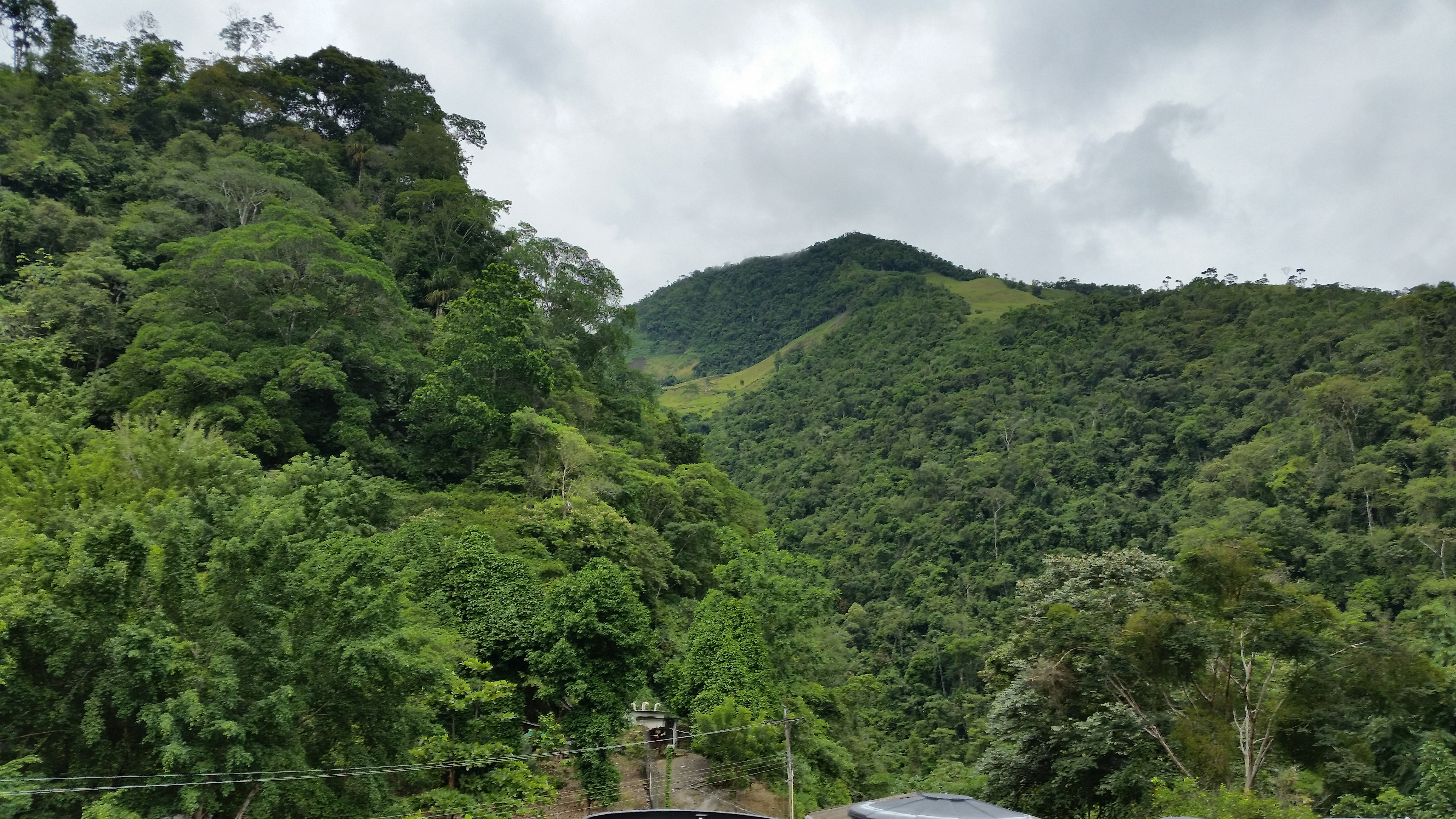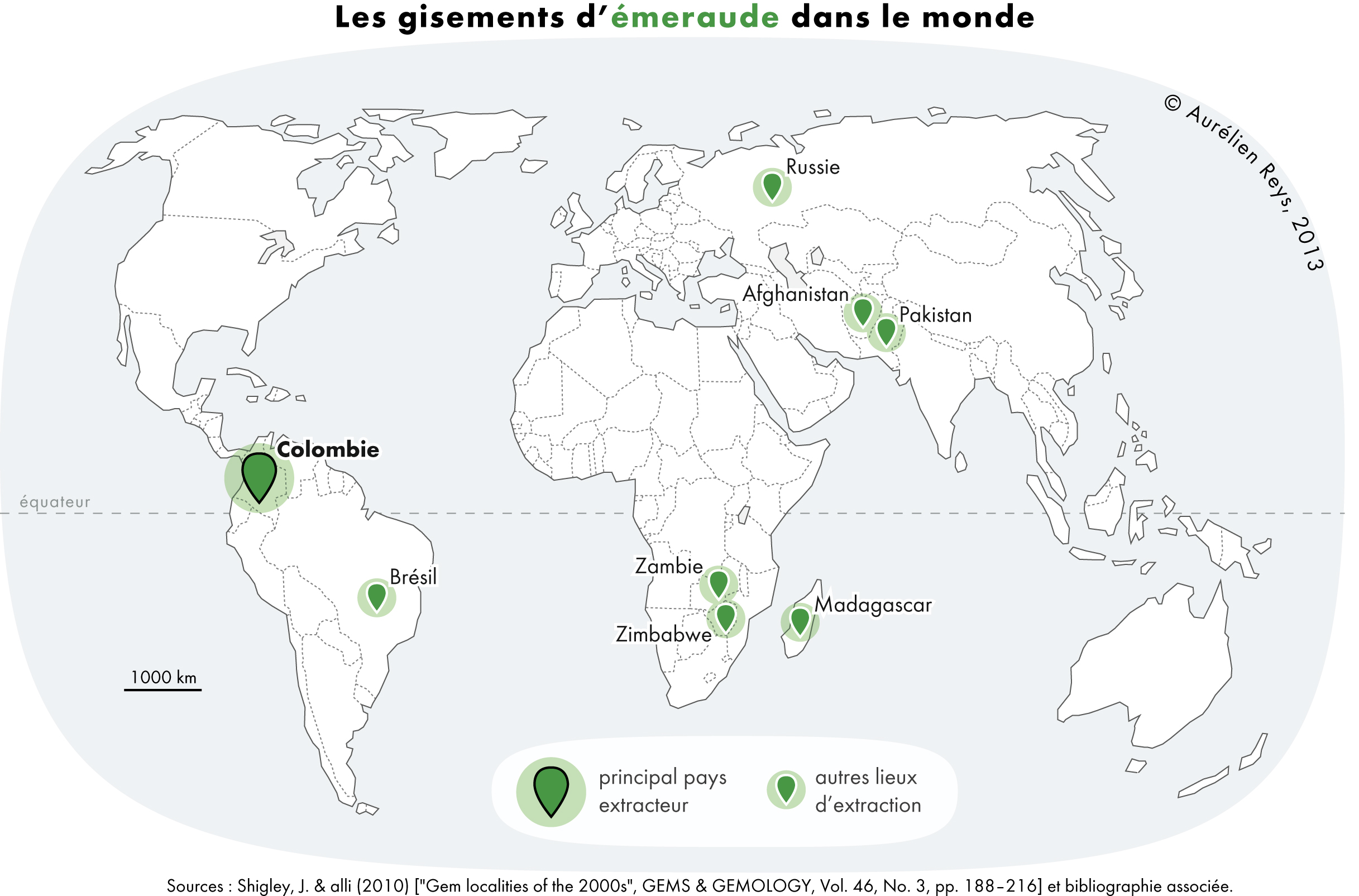|
La Pita
La Pita is an Colombian emeralds, emerald mine located in the western belt of the Colombian emerald mining area. It is owned and operated by the Colombian company, Zuliana De Esmeraldas Ltda. History La Pita is one of Colombia's largest emerald mines in Colombia, tantamount to its competitor, previously called Puerto Arturo, at present known as the Muzo Mine. La Pita has been one of the biggest contributors to Colombia's emerald production at times producing more than 80% of the total output of emeralds in Colombia. La Pita was discovered when an access road was being built, the workers and owners of the land descended towards Río Minero and noticed a yellowish patch of earth accompanied by the black carbonate altered shales of the Muzo Formation. This area is known as ''Amariallal'' and marked the establishment of La Pita Mine. The entrance of the mine was first opened in a ravine at the bottom of the mountain near Río Minero and extends approximately until the tunnel makes ... [...More Info...] [...Related Items...] OR: [Wikipedia] [Google] [Baidu] |
Maripí
Maripí is a town and municipality in the Colombian Departments of Colombia, Department of Boyacá Department, Boyacá, part of the subregion of the Western Boyacá Province. The town hosts an important Colombian emeralds, emerald mine; La Pita. See also * La Pita * Muzo, Chivor, Somondoco External links Municipalities of Boyacá Department {{Boyacá-geo-stub ... [...More Info...] [...Related Items...] OR: [Wikipedia] [Google] [Baidu] |
Otanche
Otanche is a town and municipality in Boyacá Department, Colombia, part of the subregion of the Western Boyacá Province. Climate Otanche has a tropical rainforest climate (Köppen Köppen is a German surname. Notable people with the surname include: * Bernd Köppen (1951–2014), German pianist and composer * Carl Köppen (1833-1907), German military advisor in Meiji era Japan * Edlef Köppen (1893–1939), German author ...: ''Aw'') with mild temperatures and high amounts of rainfall throughout the year. References Municipalities of Boyacá Department {{Boyacá-geo-stub ... [...More Info...] [...Related Items...] OR: [Wikipedia] [Google] [Baidu] |
Emerald Mines In Colombia
Emerald is a gemstone and a variety of the mineral beryl (Be3Al2(SiO3)6) colored green by trace amounts of chromium or sometimes vanadium.Hurlbut, Cornelius S. Jr., and Kammerling, Robert C. (1991). ''Gemology'', John Wiley & Sons, New York, p. 203, . Beryl has a hardness of 7.5–8 on the Mohs scale. Most emeralds have many inclusions, so their toughness (resistance to breakage) is classified as generally poor. Emerald is a cyclosilicate. Etymology The word "emerald" is derived (via and ), from Vulgar Latin: ''esmaralda/esmaraldus'', a variant of Latin ''smaragdus'', which was via (smáragdos; "green gem"). The Greek word may have a Semitic, Sanskrit or Persian origin. According to ''Webster's Dictionary'' the term emerald was first used in the 14th century. Properties determining value Emeralds, like all colored gemstones, are graded using four basic parameters known as "the four ''C''s": ''color'', ''clarity,'' ''cut'' and ''carat weight''. Normally, in grading c ... [...More Info...] [...Related Items...] OR: [Wikipedia] [Google] [Baidu] |
Geology (journal)
''Geology'' is a peer-reviewed publication of the Geological Society of America (GSA). GSA stated (in 2006) (ISSN 0091-7613) that it is the most widely read scientific journal in the field of earth science. It is published monthly, with each issue containing 20 or more articles. One of the goals of the journal is to provide a forum for shorter articles (four pages each) and less focus on purely academic research–type articles. According to the ''Journal Citation Reports'', the journal had a 2020 impact factor of 5.399. The journal is indexed in Scopus and SCImago The SCImago Journal Rank (SJR) indicator is a measure of the prestige of scholarly journals that accounts for both the number of citations received by a journal and the prestige of the journals where the citations come from. Etymology SCImag .... See also * List of scientific journals ** List of earth and atmospheric sciences journals References External links *Geology — Browse Issues [...More Info...] [...Related Items...] OR: [Wikipedia] [Google] [Baidu] |
Industrial University Of Santander
The Industrial University of Santander (), abbreviated in Spanish with the acronym UIS, is a public university, based in a coeducational, and research model. The university serves the Santander Department, being the main campus located in the city of Bucaramanga, Santander, Colombia. The university also has satellite campuses across the department in the cities of Barrancabermeja, Barbosa, Málaga, Piedecuesta, Socorro. UIS is the largest higher education institution and is regarded as one of the leading multidisciplinary research universities in Colombia by student population, research groups, academic output, technological development, and number of publications. UIS is one of the most selective Colombian universities and have been ranked as the top university in the North region of Colombia. The university was created by ordinance No. 83 of June 22, 1944, by the Departmental Assembly, and began its labors in March 1948. The university offers many degrees at undergradua ... [...More Info...] [...Related Items...] OR: [Wikipedia] [Google] [Baidu] |
National Police Of Colombia
The National Police of Colombia () is the law enforcement agency#natpol, national police force of the Republic of Colombia. Although the National Police is not part of the Military Forces of Colombia (Army, Navy, and Aerospace Force), it constitutes along with them the "Public Force" and is also controlled by the Colombian Ministry of Defense, Ministry of Defense. The National Police is the only civilian police force in Colombia. The force's official functions are to protect the Colombian nation, enforce the law by constitutional mandate, maintain and guarantee the necessary conditions for public freedoms and rights and to ensure peaceful cohabitation among the population. History Creation in the 19th century During the second half of the 19th century, Colombia went through many political changes and struggled to define itself as a nation. Tensions between the two main political parties, the Colombian Liberal Party and the Colombian Conservative Party, escalated into numerous ... [...More Info...] [...Related Items...] OR: [Wikipedia] [Google] [Baidu] |
Gypsum
Gypsum is a soft sulfate mineral composed of calcium sulfate Hydrate, dihydrate, with the chemical formula . It is widely mined and is used as a fertilizer and as the main constituent in many forms of plaster, drywall and blackboard or sidewalk chalk. Gypsum also Crystallization, crystallizes as translucent crystals of selenite (mineral), selenite. It forms as an evaporite mineral and as a Mineral hydration, hydration product of anhydrite. The Mohs scale of mineral hardness defines gypsum as hardness value 2 based on Scratch hardness, scratch hardness comparison. Fine-grained white or lightly tinted forms of gypsum known as alabaster have been used for sculpture by many cultures including Ancient Egypt, Mesopotamia, Ancient Rome, the Byzantine Empire, and the Nottingham alabasters of Medieval England. Etymology and history The word ''wikt:gypsum, gypsum'' is derived from the Greek language, Greek word (), "plaster". Because the quarry, quarries of the Montmartre district of P ... [...More Info...] [...Related Items...] OR: [Wikipedia] [Google] [Baidu] |
Marl
Marl is an earthy material rich in carbonate minerals, Clay minerals, clays, and silt. When Lithification, hardened into rock, this becomes marlstone. It is formed in marine or freshwater environments, often through the activities of algae. Marl makes up the lower part of the White cliffs of Dover, cliffs of Dover, and the Channel Tunnel follows these marl layers between France and the United Kingdom. Marl is also a common sediment in post-glacial lakes, such as the marl ponds of the northeastern United States. Marl has been used as a soil conditioner and neutralizing agent for acid soil and in the manufacture of cement. Description Marl or marlstone is a carbonate mineral, carbonate-rich mud or mudstone which contains variable amounts of Clay minerals, clays and silt. The term was originally loosely applied to a variety of materials, most of which occur as loose, earthy deposits consisting chiefly of an intimate mixture of clay and calcium carbonate, formed under freshwa ... [...More Info...] [...Related Items...] OR: [Wikipedia] [Google] [Baidu] |
Micrite
Micrite is a limestone constituent formed of calcareous particles ranging in diameter up to four μm formed by the recrystallization of lime mud. Flügel, Erik, ''Microfacies of Carbonate Rocks: Analysis, Interpretation and Application,'' Springer, pp 74-94, 2004 The term was coined in 1959 by Robert L. Folk for his carbonate rock classification system. Micrite is derived from MICRocrystalline calcITE. In the Folk classification micrite is a carbonate rock dominated by fine-grained calcite Calcite is a Carbonate minerals, carbonate mineral and the most stable Polymorphism (materials science), polymorph of calcium carbonate (CaCO3). It is a very common mineral, particularly as a component of limestone. Calcite defines hardness 3 on .... Carbonate rocks that contain fine-grained calcite in addition to allochems are named ''intramicrite'', ''oomicrite'', ''biomicrite'' or ''pelmicrite'' under the Folk classification depending on the dominant allochem. Micrite is lime mud, c ... [...More Info...] [...Related Items...] OR: [Wikipedia] [Google] [Baidu] |
Ammonite
Ammonoids are extinct, (typically) coiled-shelled cephalopods comprising the subclass Ammonoidea. They are more closely related to living octopuses, squid, and cuttlefish (which comprise the clade Coleoidea) than they are to nautiluses (family Nautilidae). The earliest ammonoids appeared during the Emsian stage of the Early Devonian (410.62 million years ago), with the last species vanishing during or soon after the Cretaceous–Paleogene extinction event (66 million years ago). They are often called ammonites, which is most frequently used for members of the order Ammonitida, the only remaining group of ammonoids from the Jurassic up until their extinction. Ammonoids exhibited considerable diversity over their evolutionary history, with over 10,000 species having been described. Ammonoids are excellent index fossils, and they have been frequently used to link rock layers in which a particular species or genus is found to specific Geologic time scale, geologic time periods. Their ... [...More Info...] [...Related Items...] OR: [Wikipedia] [Google] [Baidu] |
Siltstone
Siltstone, also known as aleurolite, is a clastic sedimentary rock that is composed mostly of silt. It is a form of mudrock with a low clay mineral content, which can be distinguished from shale by its lack of fissility. Although its permeability and porosity is relatively low, siltstone is sometimes a tight gas reservoir rock, an unconventional reservoir for natural gas that requires hydraulic fracturing for economic gas production. Siltstone was prized in ancient Egypt for manufacturing statuary and cosmetic palettes. The siltstone quarried at Wadi Hammamat was a hard, fine-grained siltstone that resisted flaking and was almost ideal for such uses. Description There is not complete agreement on the definition of siltstone. One definition is that siltstone is mudrock (clastic sedimentary rock containing at least 50% clay and silt) in which at least 2/3 of the clay and silt fraction is composed of silt-sized particles. Silt is defined as grains 2–62 μm in diam ... [...More Info...] [...Related Items...] OR: [Wikipedia] [Google] [Baidu] |




